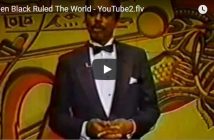Source: http://atlantablackstar.com
Jamaica’s First Enslaved People
Once Jamaica was “discovered” by Spain in 1494, the Arawaks, who had inhabited the island for centuries, were quickly subjected to brutality and slavery, becoming the first enslaved people on the island.
Kidnapped Africans Arrive
The first enslaved Africans brought to Jamaica came in 1534 when Pedro Mazuelo, one of the early Spanish colonizers, brought 30 Africans from the Canary Islands.
Genocide in Jamaica
The first census conducted by the Spanish in 1611 recorded 558 enslaved Africans and 107 free Africans. However, only 74 Arawak natives remained. The rest of the 60,000 people living on the island before Columbus arrived 117 years earlier had been wiped out by the violence, disease and forced labor unleashed by the Spanish invaders.
Britain Brings Sweet Misery
After the British forces invaded in 1655, they introduced the cultivation of sugar cane to the island, which drastically increased their desire to enslave Africans for free labor. The island became one of Britain’s most profitable colonies. From the mid-1700s until the abolition of slavery in Jamaica in the 1830s, Jamaica accounted for 42 percent of sugar imported into Britain.
Britain Makes Pounds While Pounding Blacks
During the years of slavery, the Jamaican economy was constructed in such a way that Blacks were exploited and subjected to unthinkable acts of brutality, such as whippings, rapes, torture and murder. While the Blacks lived in this utter misery, all the benefits of their labor went to the slave masters and England.
Unsettling Numbers
By the end of the 18th century, there were more than 300,000 enslaved people in Jamaica; and the fact that they outnumbered the plantation owners was unsettling for many of the wealthy, white inhabitants of the island.
Africans Strike Back
Many of the enslaved Africans did not settle for the horrid conditions of slavery in Jamaica. There were a number of acts of resistance that were used to fight against it, including noncooperation, insubordination, sabotage, poisoning of animals and owners, infanticide, self-mutilation, suicide, running away and armed rebellion.
Island of Rebellion and Tacky’s War
Sixteen slave uprisings had taken place between 1655 and 1813. There were also major rebellions in 1816 and 1823. By the 1820s, more than 2,500 enslaved people were escaping from the plantations each year. As a matter of fact, more rebellions occurred in Jamaica, Britain’s largest colony, than in all its other colonies in the Caribbean combined. One of the most famous of the Jamaican rebellions started in 1760 and was led by a man known as Tacky. It was called Tacky’s War, and it lasted for over a year before being suppressed by the British colonial forces.
Jamaican Maroons
Adding to the unrest of the island was the existence of the Maroons. These freed Africans retreated to the mountains and developed their own communities in the interior of Jamaica. Led by a brave African woman called Nanny, the Maroons defended their freedom from the British invaders by burning property, killing soldiers and freeing other enslaved Africans. The Maroons fought two wars against the British.
Jamaica’s Biggest Uprising
Samuel Sharpe led the largest uprising by enslaved people in 1831. It started out peacefully, with enslaved Africans refusing to work. But things escalated and, in resistance, Africans burnt down houses and warehouses full of sugar cane, causing over 1 million pounds worth of damage. More than 200 plantations in north Jamaica were taken over as more than 20,000 enslaved people seized control of large chunks of land.
Abolition of Slavery in Jamaica
The fear of more uprisings as well as other factors prompted the British to abolish slavery in Jamaica on Aug. 1, 1834. At that time, the British attempted to make all enslaved Blacks remain working for the same masters as apprentices. The system was a failure, and that also was abolished. Enslaved Blacks received their unrestricted freedom on Aug. 1, 1838.
Legacy of Slavery in Jamaica
In order to sustain the exploitation of Blacks, an ideology of racism was developed to make the terms African, “negro” and “slave” interchangeable. The primary objective of this ideology was to categorize Black Africans, including those on the island, as less than human.
The effect of this racist campaign on the self-confidence of Africans and people of African descent can still be seen to this day, where dark brown or black skin is seen by many Jamaicans as inferior to light or white skin — as well as other African characteristics such as broad noses, thick lips and tightly curled hair.
Also, a hierarchy based on skin tone was created by British colonizers to divide and rule over the Africans. Lighter-skinned Blacks were given more privileges to encourage them to aid the slave masters in the oppression of darker-skinned Blacks. This dynamic still remains in Jamaica to some degree today.
12 Facts About Slavery in Jamaica That Shaped Its Society,

















